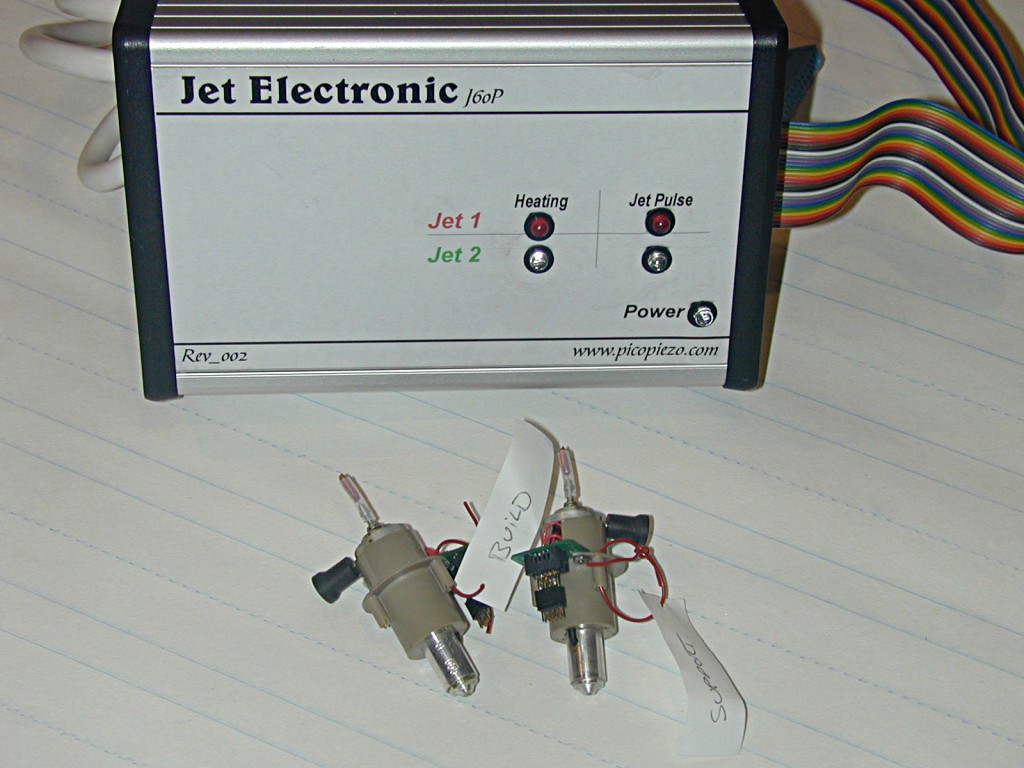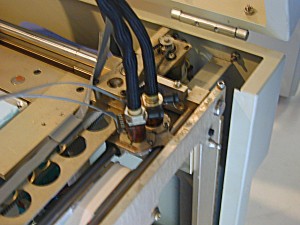Nozzle features Orifice quality and dimensions – Hidden orifice exposed in steps by slicing face of nozzle to reach a...
The Godfather of Single-Nozzle 3D printers using Inkjet Drop-on-demand printheads
Layer Grown Model Technology Services (LGM) is owned by James K McMahon, providing technical and historical facts to anyone interested in Drop-On-Demand and Continuous 3D inkjet printers using cylindrical piezo single-nozzle technology. This acoustical resonant Drop-on-demand inkjet technology was introduced and designed in 1984 at Howtek, Inc., Hudson, New Hampshire under the supervision of an inkjet team led by James McMahon. The inkjets using the tubular ‘single-nozzle technology can only be found in one company product and are still in use today. Historical data and rare models of these machines can be seen in the 3D Inkjet museum collection at Layer Grown Model’s New Hampshire office, 15 King John Drive. Please contact us for an appointment. Read posts and pages describing Additive Manufacturings first 3D material jetting devices that were introduced by Howtek, Inc. before any other AM processes were manufactured. All AM proceses require material delivery and with computer controls. Inkjets were first to meet these requirements. Inkjets did not need a Patent to work in AM products much like powder rakes, resin vats, welding tools or UV light sources. Don’t be misled by marketing descriptions of 3D printing products. Inkjets only needed inks that solidfied on surfaces to produce three-dimensional or ‘raised’ computer images that formed objects. Additive Manufacturing is all about designing for and managing 3D materials.
Hired in 1978 by Exxon Office Systems, Danbury Systems Division, as an technician to mount a glass single-nozzle (original 1973 Zoltan style)inkjet on a Jet Fax Printing System. The Zoltan jet printed randomly in “bold” fonts, confusing everyone on the project. The ‘Resonanceman” studied the problem and was one of the first at the Exxon division to file a patent, US43389657, Ink Jet System demonstarting that resonance fluid chamber could cause a Zoltan jet to work as a pump and a jet depending on the nozzle orifice impedence. Next assigned to the Physics Department as a junior scientist under John Martner, many patents were issued from experiments with single-nozzle fluidics until he quit and joining RH Research (later Howtek) in Hudson New Hampshire as the primary inkjet engineer in early 1984. More of the history is written in Wikipedia.com under “hot-melt” and “Inkjet printing” topics. Hotmelt thermoplastics printing inspired the Presstek, Inc’s digital offset prepress (1986), the Braillemaster printer project(1989) and Visual Impact Corporation’s 3D printer (1989), a concept machine put together with some Pixelmaster assemblies for Richard Helinski’s patent, Method and Means for Constructing Three-dimensional articles by Particle Deposition, later licensed to Sanders Prototype, Inc in 1993. It uses Howtek inkjets and printing materials, although not mentioned in the patent.
Howtek was a new company, starting from an empty building filled with Gamex slot machines owned by Robert Howard in 1983. Howards 1970’s dream was to make a rotary printhead full color printer with Zoltan style jets and hotmelt inks. He sought out and hired six inkjet emplyees at Exxon for Howtek. His vision is told in “Connecting the Dots”, Robert Howard, Welcome Rain Publishers, LLC. Howard formed the new company, Presstek and at it’s height bought AB Dick, the earliest company to research and use inkjets in the 1950’s. Many former Howtek employees moved on to Presstek and Sanders Prototype after Richard Helinski resigned. Additive Manufacturing’s “Material Jetting” history prior to it’s debut in the Sanders Modelmaker 6 pro in 1993 using Howtek inkjets is important especially since the Patent path is very cloudy.



